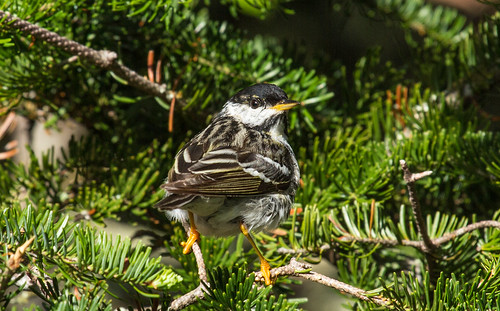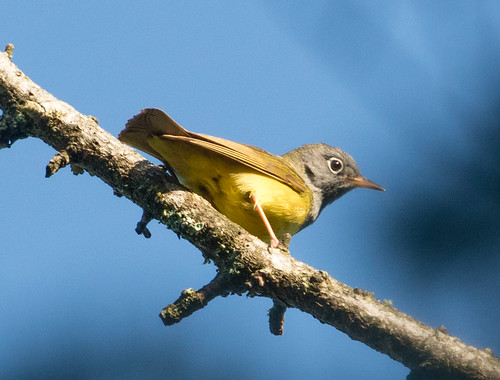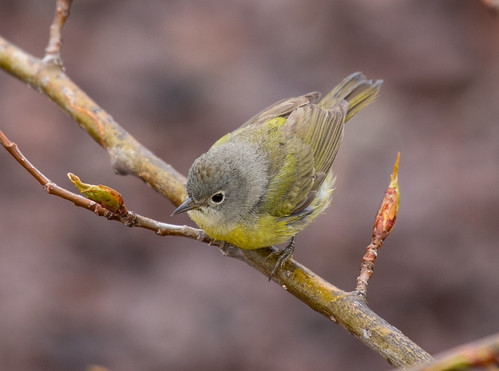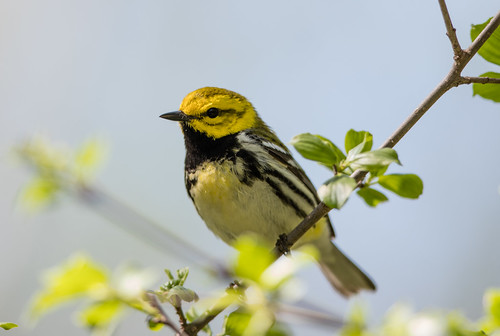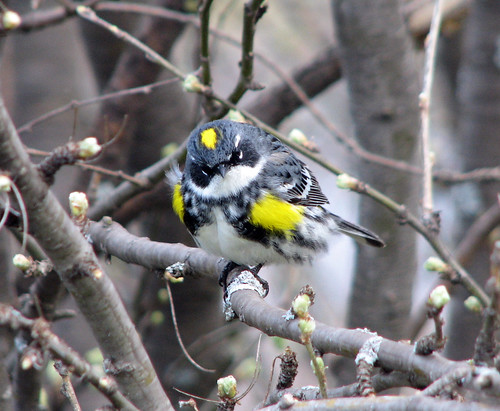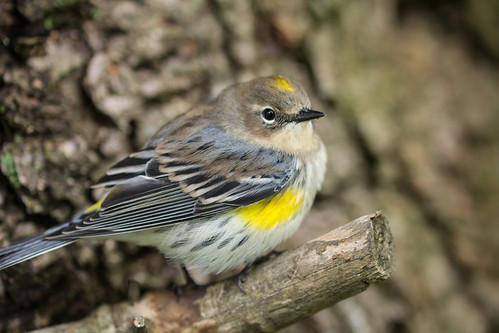There are two birding dates I celebrate every year. I call March 2 “Chickadee Day” because on March 2, 1975, I saw my first Black-capped Chickadee, the first bird on my life list, at Baker Woodlot on the Michigan State University campus. After that, I spent at least a few hours almost every day looking for and trying to identify birds. By May 11, I had my lifelist up to 30 species, which seemed like an awful lot at the time. And on that morning, what I now commemorate as “Warbler Day,” I encountered wave after wave of warbler flocks on the Red Cedar Woodlot on campus, and managed to identify four of them.
I’d read the warbler section in my Peterson and Golden guides over and over, but the sheer number of species in the array was daunting. I decided that I’d only count a warbler on my list when I could see every field mark as I kept one individual in sight. Warblers are so animated, flitting here and there in their quest for insects, that this was harder than I’d anticipated.
My first was relatively easy—the Black-and-white Warbler. It was easy to see that my bird had only black and white plumage, without a trace of yellow or buffy. The only other warbler with simple black and white plumage is the Blackpoll Warbler, but it has a solid black cap without a center white stripe, white cheeks, and yellow on both the bill and feet.
The male Black-and-white that I identified had a clear black line through the eye, a white line through the center of the crown, and blackish bill and feet. Voila! My lifelist was at 31, and I’d teased out my first warbler!
My second took longer to figure out, plus a stroke of luck. Nashville Warblers have a gray face with a perfect circle of white feathers around the eye, olive-gray back and wings, and a pure yellow underside from the throat to the undertail coverts. The larger Connecticut Warbler has a gray hood without a yellow throat—that one was easy to exclude.
But my field guide mentioned that male Nashville Warblers have a chestnut cap that they can hide or expose as they choose, even trickier for me to see than the ruby feathers of a Ruby-crowned Kinglet. Fortunately, while I struggled to keep my first Nashville Warbler in view, he raised the orange crown and my list was suddenly at 32.
I vividly remember figuring out number 33, and also the one warbler I really did identify that day, though I didn’t count it because it wasn’t still in view when I figured it out. In studying my field guides, I knew I had to concentrate on the presence or absence of an eye ring or eye line and of wing bars, as well as noticing whether the breast was streaked and where any yellow might be. That morning, suddenly I noticed a warbler sitting conspicuously on a low dead branch. It had a brilliant yellow breast, a vivid black necklace with streaks of black running a short way down the breast, a solid slate-blue back, clean white eye rings connected by yellow lores, and no wing bars.
I rifled through the pages of my field guide, came to the Canada Warbler, which matched every particular, and looked into the same branch to compare the picture with the real thing. Only suddenly the bird sitting on that very branch, still with the brilliant yellow breast and black necklace with streaks of black, had huge white wing patches, like wing bars gone wild. Instead of eye rings, it had white eye crescents, and had a black cheek patch.
I rifled through the field guide, found the Magnolia Warbler, and the real bird gave me time to compare every feature. So Magnolia Warbler was Number 33. I didn’t encounter a countable Canada Warbler until the next year.
The final warbler that I identified on Warbler Day had a white belly, rich black throat and sides, white wing bars, and a yellow face—a Black-throated Green.
That one even sang while I was reading about it, and the description, zee, zee, zoo-zoo-zee, was easy to match to the song.
Oddly enough, I did not identify what was almost certainly the most abundant warbler thereabouts that day, or all spring. To identify a Yellow-rumped Warbler using the rules I’d set for myself, I’d need to be able to see the male’s yellow crown, epaulets, and rump all while I had the book open to the right page.
Now I don’t even need to glance up when I hear their familiar chip, but my painstaking procedure, although it kept my lifelist from growing fast, made me more painstaking in noticing features of every bird.
I’d stayed in the woodlot longer than I’d planned and had to rush to my environmental education class. One guy in there, named Dave Catlin, was a Real Birder, and I gushed to him about my experience. Some of the Real Birders I’d already encountered were rather snooty, and would never have taken seriously someone with a lifelist of 34 who had just identified her first warblers. But Dave seemed almost as thrilled as I was, listening with joy and excitement to every detail. That was wonderfully affirming, and made birding into a shared pleasure.
Every year on Warbler Day, I think of my first four warblers and Dave Catlin. I did manage to tease out the identification of my lifer Yellow-rumped Warbler that autumn, even in its drabber fall plumage.
The next spring, it was Dave Catlin who was with me when I saw my first male Yellow-rump in full breeding plumage. He also showed me my lifer Hermit Thrush and Winter Wren. I love that my learning about nature also gave me more appreciation for the best of human nature.


